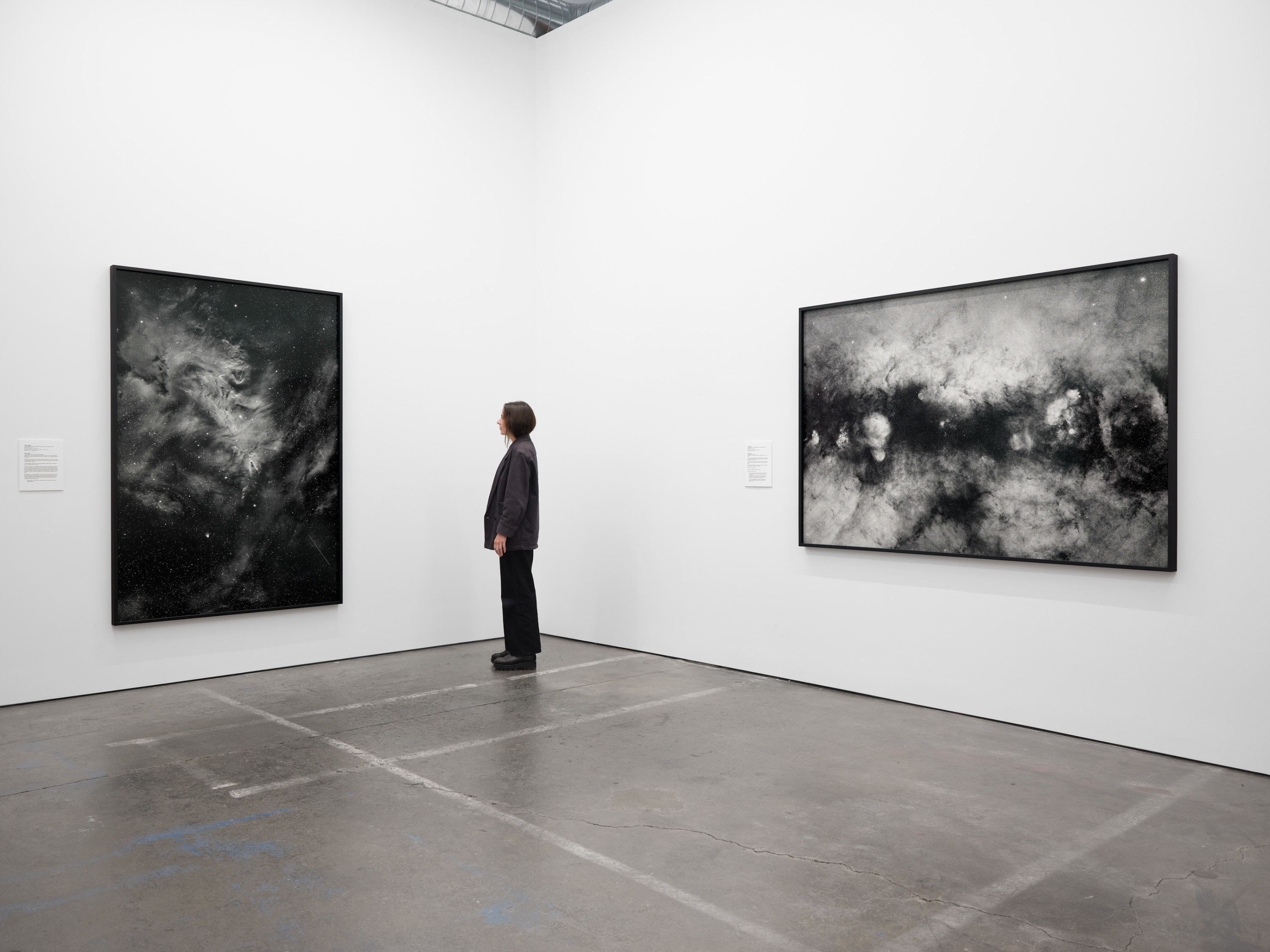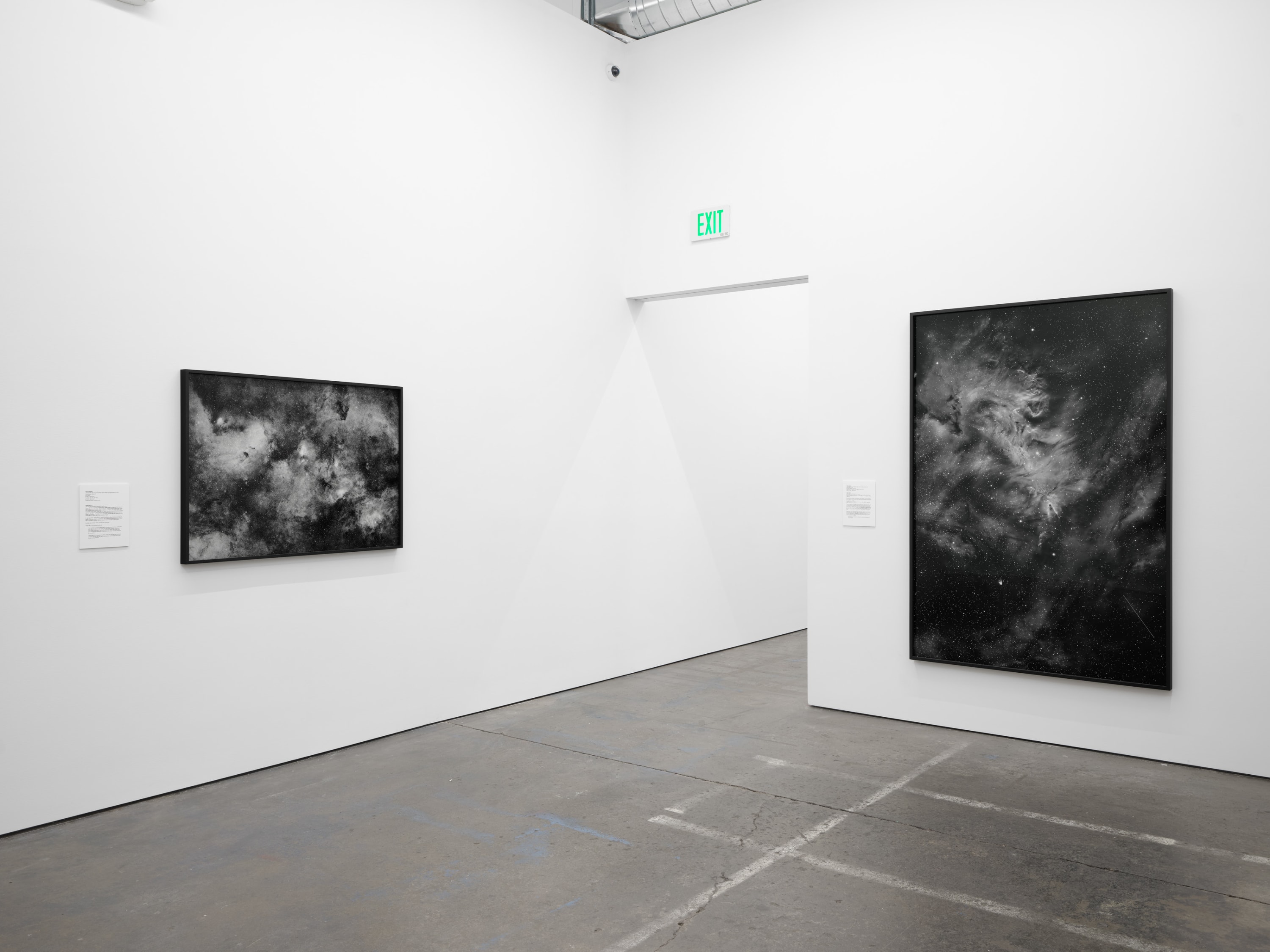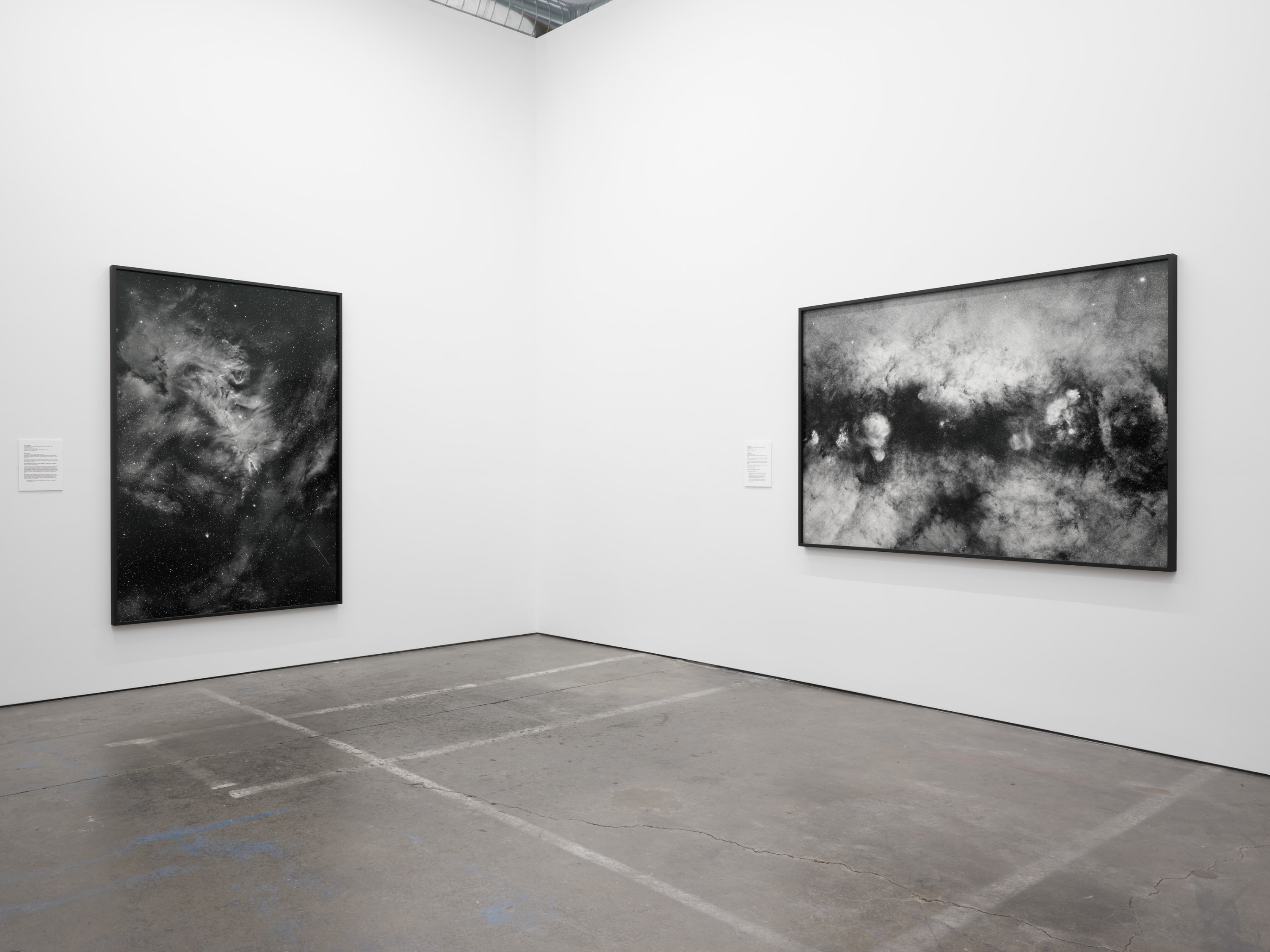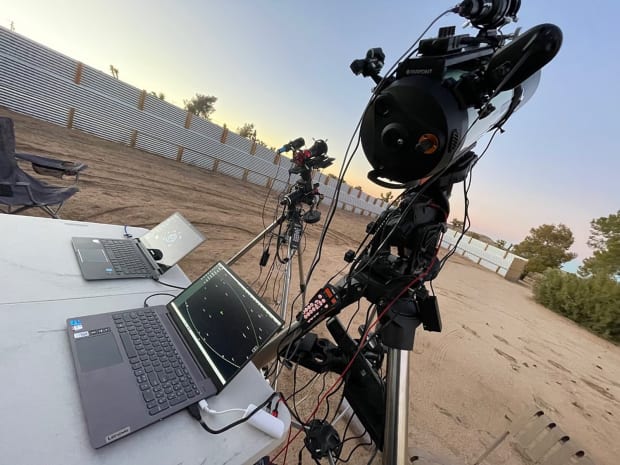Trevor Paglen: Unids
-

-
Altman Siegel is delighted to present a selection of work from Trevor Paglen's new series, Unids, which was recently on view at the Neue Berliner Kunstverein. Continuing his decades-long exploration of the relationship between technology and power, with a particular focus on government-sponsored surveillance, Paglen's new photographs capture images of the unknown objects which orbit the earth, referred to as "unids" by amateur astronomers. These objects are acknowledged and actively monitored by the U.S. military, though their purpose and origin are officially unknown. They could be innocuous - nothing more than space debris - or they could be objects of covert surveillance attempting to disguise themselves as debris.
-

-
There are roughly 350 objects of unknown origin in orbit, some of which are tracked by the U.S. Air Force. The objects which the U.S. Air Force does not publicly track, presumably because they are of classified origins, are sourced and observed by both amateur astronomers and foreign sources. Using the information available from these sources to model the orbits of such "unids," Paglen can predict where and when in the sky he might find a particular object. Because "unids" tend to be fast moving and very faint, Paglen uses a Rowe-Ackermann Schmidt Astrograph (RASA) astrograph to capture 10,000 seconds worth of data for each "unid" sighting. The resulting images, shot using an infrared filter, highlight the various stelliferous and gaseous regions in the sky which are invisible to our eyes. Stunning in their detail; the hydrogen, sulfur, and oxygen emissions reveal great cosmic clouds, stellar remnants, and galactic structures that recall Gustave Doré's etchings of The Divine Comedy. Though Paglen's photographs visualize the appearance of these unknown objects, they leave the questions surrounding their existence open ended: Where did these objects come from? Are they harmless? Or is their orbit part of a more sinister, calculated system of surveillance? In questioning the origins of such "unids," Paglen continues to parse the invisible power structures embedded into our modern landscape through technology, highlighting concerns regarding surveillance, privacy, and freedom.
-
 Visualization of Unknown Object Orbits (Paglen Studio)
Visualization of Unknown Object Orbits (Paglen Studio) -
-
-

-
-
-

-
-
-

-
-
-
 Production documentation (Paglen Studio)
Production documentation (Paglen Studio) -

"The Rowe-Ackermann Schmidt Astrograph is designed above all for speed, but it sacrifices ease and multifunctionality to get there. The design is a variation on a Schmidt-Cassegrain Telescope that replaces the secondary mirror with a camera sensor. The advantage of this is that the telescope can collect far more light much faster than a telescope with a secondary mirror. There are, however, many disadvantages. First, the removal of the secondary mirror means that there is no possibility of including an eyepiece in the design - there is no way to look through the telescope and it can only be used with a specialized camera. Secondly, at f/2 the critical focus zone (known as 'depth of field' in 'normal' photography) of the telescope is smaller than half the width of a human hair. This translates into extreme technical difficulties in positioning the camera sensor accurately, as slight imperfections in how the camera sensor is placed in its housing during the manufacturing process create optical anomalies that have to be manually compensated for."
– Trevor Paglen
-
-
Press
-
Paglen's work has been the subject of solo exhibitions at Neuer Berliner Kunstverein (n.b.k.), Berlin, Germany; Pace Gallery, Seoul, Korea and New York, NY; Carnegie Museum of Art, Pittsburgh, PA; Fondazione Prada, Milan, Italy; Barbican Centre, London, UK; Smithsonian American Art Museum, Washington, D.C.; MCA San Diego, San Diego, CA; Museo Tamayo, Mexico City, Mexico; Tensta Konsthall, Spånga, Sweden; KW Institute for Contemporary Art, Berlin, Germany; Kunsthalle Winterthur, Winterthur, Switzerland; Nevada Museum of Art, Reno, NV; Frankfurter Kunstverein, Frankfurt, Germany; Eli & Edythe Broad Art Museum, East Lansing, MI; Secession, Vienna, Austria; Kunsthall Oslo, Oslo, Norway; and San Francisco Museum of Modern Art, San Francisco, CA. Paglen received the Nam June Paik Art Center Prize in 2018 and was a recipient of a MacArthur Fellowship in 2017. He is included in The 14th Shanghai Biennale, Cosmos Cinema, opening on November 9, 2023.




















